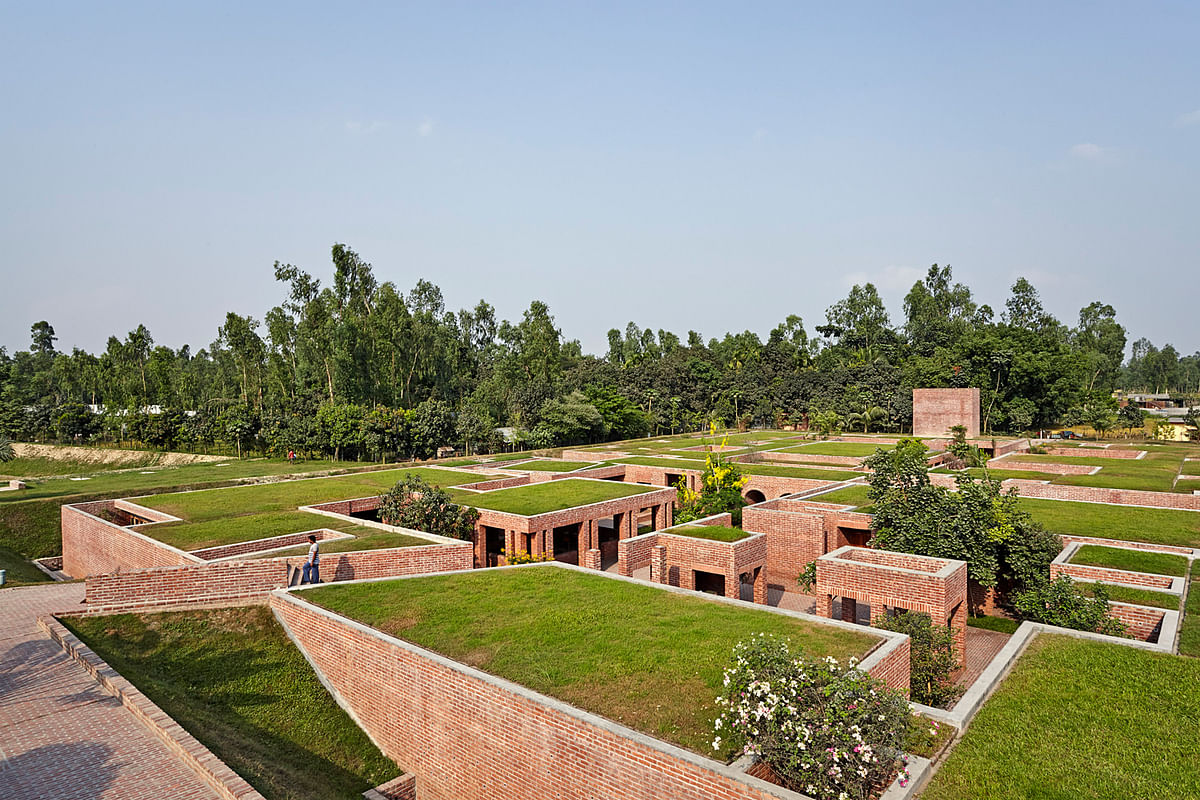
2016 Aga Khan Award for Architecture winners announced
By Justine Testado|
Monday, Oct 3, 2016
Related
The 2016 winners have been revealed for the honorable Aga Khan Award for Architecture. Established in 1977 by the Aga Khan and bestowed every three years, the prize recognizes outstanding architectural projects that are deemed to have successfully addressed the needs and aspirations of its surroundings communities — particularly where Muslims have a significant presence.
Starting out with 348 nominations for the 2014-2016 cycle, the independent Master Jury shortlisted 19 competitive projects this past May. Following rigorous deliberation, the jury finally selected the six winning projects, which were announced today in a ceremony in Abu Dhabi. The projects include a children's library in Beijing, a spirituality refuge in Dhaka, and the Zaha Hadid-designed Issam Fares Institute, to name a few.
Have a look at the winning projects below.
Friendship Centre | Gaibandha, Bangladesh
Architect: Kashef Chowdhury / URBANA
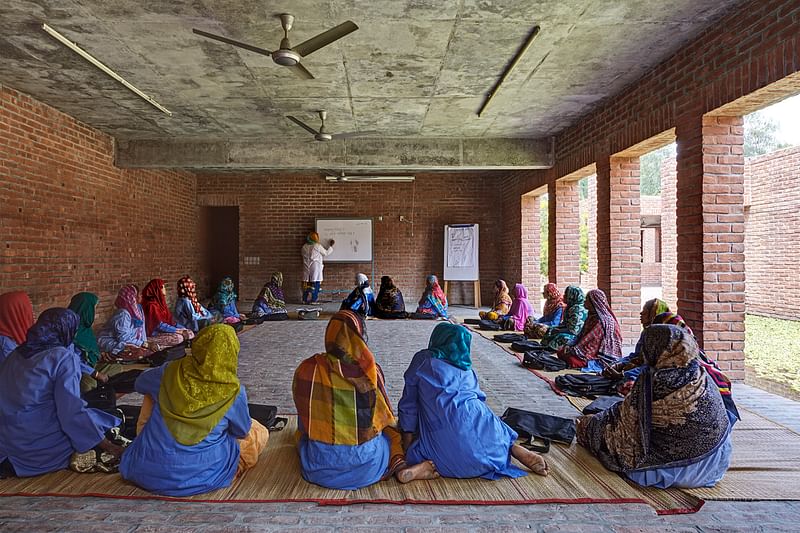
Project summary: “The Centre was created to train staff of an NGO working with people inhabiting nearby chars, or riverine islands. Offices, a library, meeting rooms, and prayer and tea rooms are included in pavilion-like buildings surrounded by courts and pools. The Centre is also rented out for meetings, training, and conferences for income generation. The local hand-made brick construction has been inspired by the monastic aesthetic of the 3rd century BC ruins of Mahasthangahr, the earliest urban archaeological site yet found in Bangladesh. Structural elements are of reinforced concrete and finishes also include timber and stone. The naturally ventilated structures have green roofs. The Centre is located in an agricultural area susceptible to flooding and earthquakes, and whose low-bearing soil has a low bearing capacity. As a result, an embankment has been constructed with a water run-off pumping facility. Constructed and finished primarily of one material - local hand-made bricks - the spaces are woven out of pavilions, courtyards, pools and greens, corridors and shadows. The Friendship Centre is divided into two sections, the outer Ka block for the offices, library and training classrooms and the inner Kha block for the residential section. At a time, 80 people can be trained here in four separate classrooms. Simplicity is the intent, monastic is the feel.”
Bait ur Rouf Mosque | Dhaka, Bangladesh
Architect: Marina Tabassum Architects


RELATED NEWS 19 shortlisted projects to compete for 2016 Aga Khan Award for Architecture
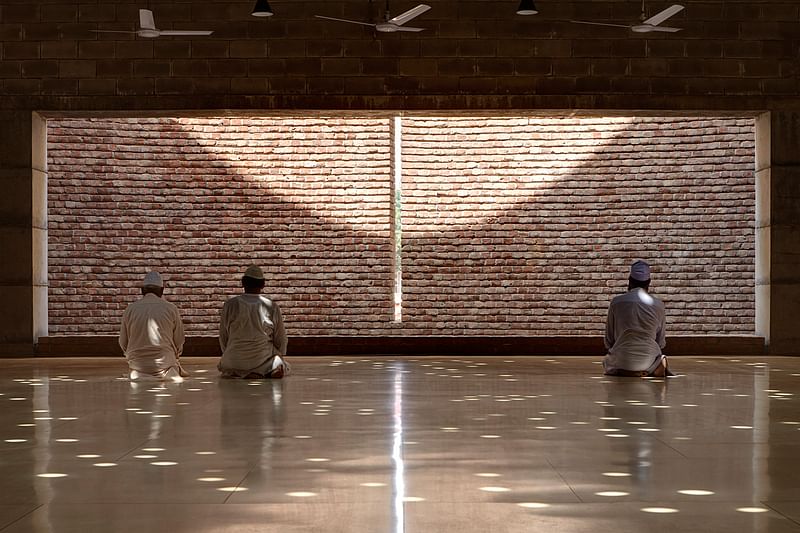
Project summary: “After a difficult life and the loss of her husband and near relatives, the client donated a part of her land for a mosque to be built. A temporary structure was erected. After her death, her grand-daughter, an architect, acted on her behalf as fundraiser, designer, client and builder to bring the project to completion. In an increasingly dense neighbourhood of Dhaka, the Mosque was raised on a plinth on a site axis creating a 13-degree angle with the qibla direction, which called for innovation in the layout. A cylindrical volume was inserted into a square, facilitating a rotation of the prayer hall, and forming light courts on four sides. The hall is a space raised on eight peripheral columns. Ancillary functions are located in spaces created by the outer square and the cylinder. The plinth remains vibrant throughout the day with children playing and elderly men chatting and waiting for the call to prayer. Funded and used by locals, and inspired by Sultanate mosque architecture, it breathes through porous brick walls, keeping the prayer hall ventilated and cool. Natural light brought in through a skylight is ample for the daytime.”
Hutong Children’s Library and Art Centre | Beijing, China
Architect: ZAO / standardarchitecture / Zhang Ke
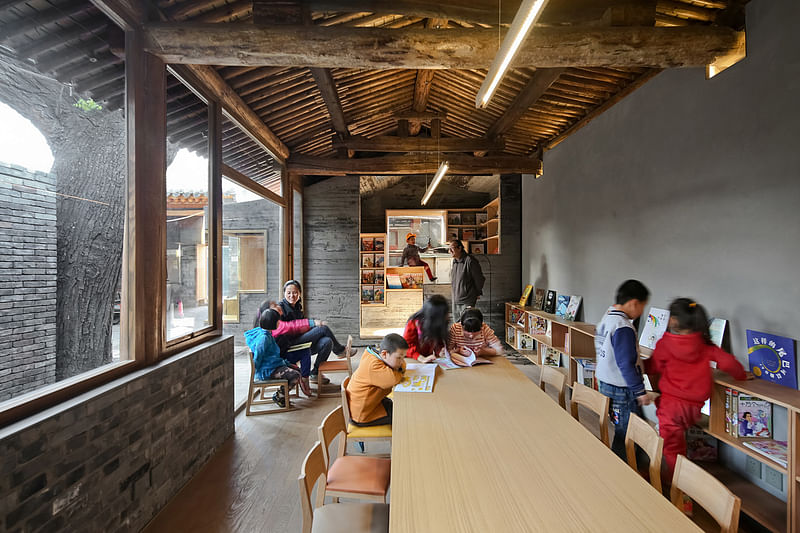
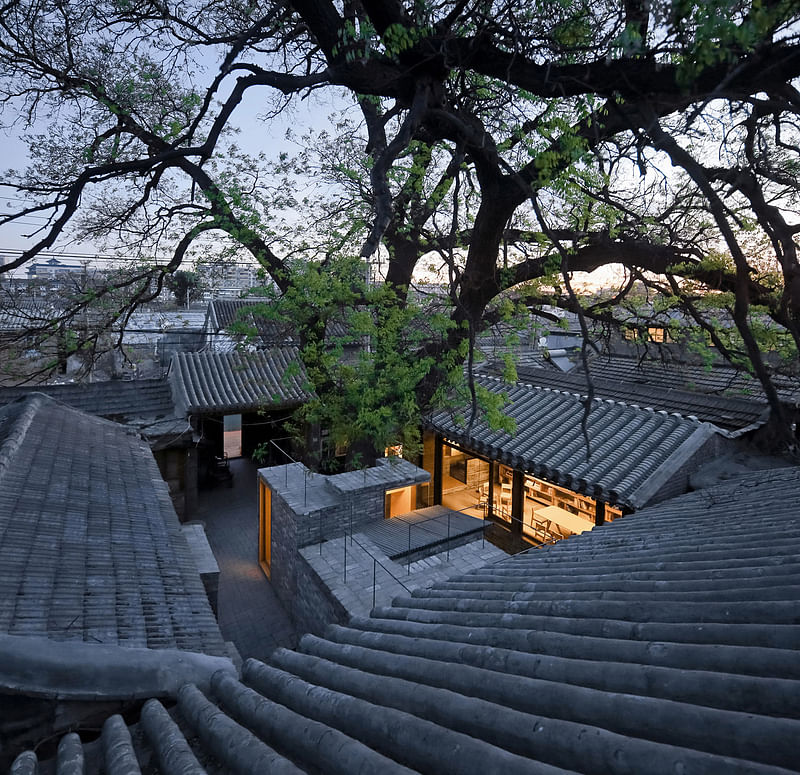
Project summary: “Cha'er Hutong is a quiet spot one kilometre from Tiananmen Square in the city centre. Number 8 in this neighbourhood, located near a major mosque, is a typical da-za-yuan (big-messy-courtyard) once occupied by over a dozen families. The courtyard is about 300-400 years old and once housed a temple that was then turned into residences in the 1950s. Over the past fifty or sixty years, each family built a small add-on kitchen in the courtyard. Almost all of them have been wiped out with the renovation practices of the past years. In redesigning, renovating and reusing the informal add-on structures instead of eliminating them, it was intended to recognise them as an important historical layer and as a critical embodiment of Beijing’s contemporary civil life in Hutongs that has so often been neglected. In concert with the families, a nine-metre-square children's library built of plywood was inserted underneath the pitched roof of an existing building. Under a big Chinese scholar tree, one of the former kitchens was redesigned into a six-metre-square miniature art space made from traditional bluish-grey brick. Through this small-scale intervention in the courtyard, bonds between communities have been strengthened and the Hutong life of local residents enriched.”
Superkilen | Copenhagen, Denmark
Architects: BIG – Bjarke Ingels Group, Topotek 1 and Superflex
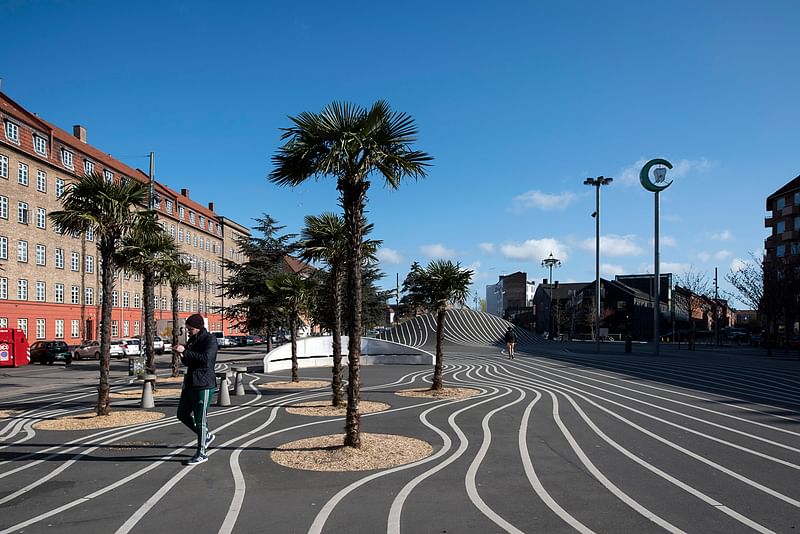
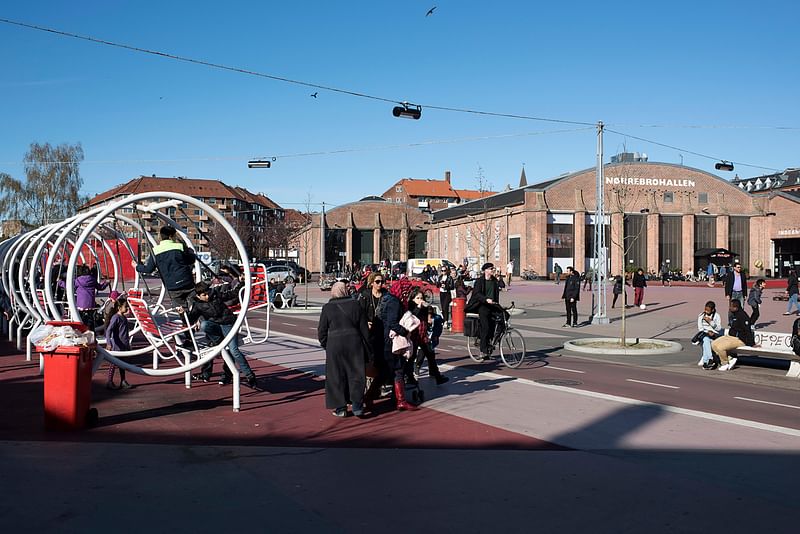
Project summary: “A meeting place for residents of Denmark’s most ethnically diverse neighbourhood and an attraction for the rest of the city, this project was approached as a giant exhibition of global urban best practice. In the spring of 2006 the street outside the architects’ Copenhagen office erupted in vandalism and violence. Having just gone through the design of a Danish mosque in downtown Copenhagen, BIG chose to focus on those initiatives and activities in urban spaces that work as promoters for integration across ethnicity, religion, culture and languages. Taking their point of departure as Superkilen’s location in the heart of outer Nørrebro district, the architects decided they would approach the project as an exercise in extreme public participation. Rather than a public outreach process geared towards the lowest common denominator or a politically correct post rationalisation of preconceived ideas navigated around any potential public resistance, BIG proposed public participation as the driving force of the design. An extensive public consultation process garnered suggestions for objects representing the over 60 nationalities present locally to be placed in the area. The 750-metre-long scheme comprises three main zones: a red square for sports; a green park as a grassy children’s playground; and a black market as a food market and picnic area.”
Tabiat Pedestrian Bridge | Tehran, Iran
Architect: Diba Tensile Architecture / Leila Araghian, Alireza Behzadi
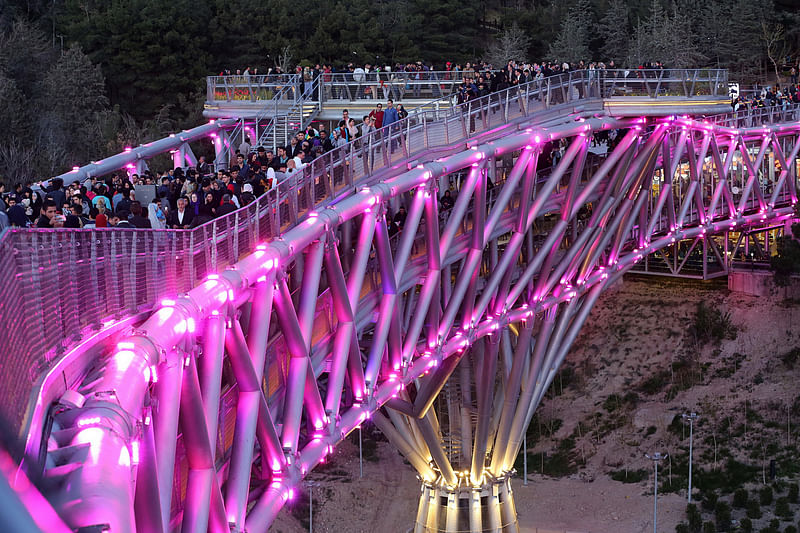
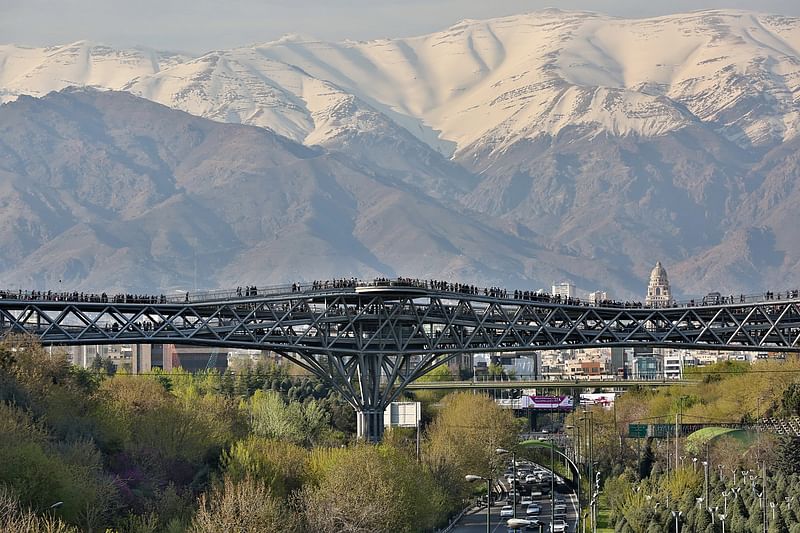
Project summary: “The architects first conceived the two-to-three level, 270-metre-long curved pedestrian bridge of varying width, a complex steel structure featuring a dynamic three-dimensional truss with two continuous deck levels that sits on three tree shape columns, with a third where the truss meets the column branches. It was an imaginative leap beyond the basic competition brief of designing a bridge to connect two parks separated by a highway in northern Tehran, without blocking the view to the Alborz Mountains. The structural elements are based on a latent geometrical order rotated and repeated in three dimensions. The result is a spatial structure large enough to create an inhabitable architectural space, where people congregate, eat and rest rather than just pass through. Multiple paths in each park were created that would lead people on to the bridge. Seating, green spaces and kiosks encourage people to linger on a site where greenery has been preserved by the minimal footprint of the bridge, whose curve offers a variety of viewing perspectives.”
Issam Fares Institute | Beirut, Lebanon
Architect: Zaha Hadid Architects
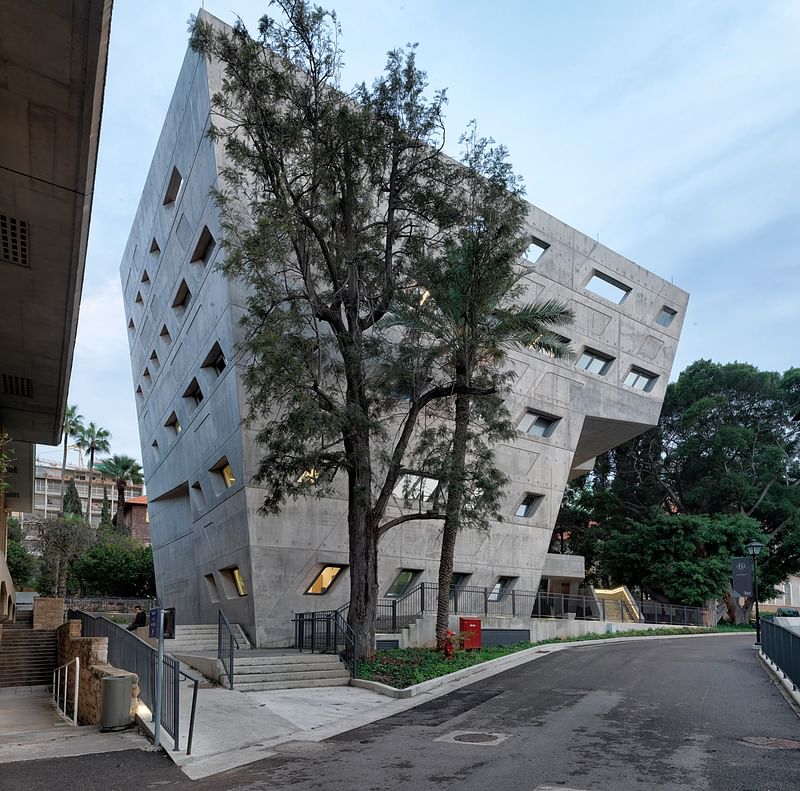
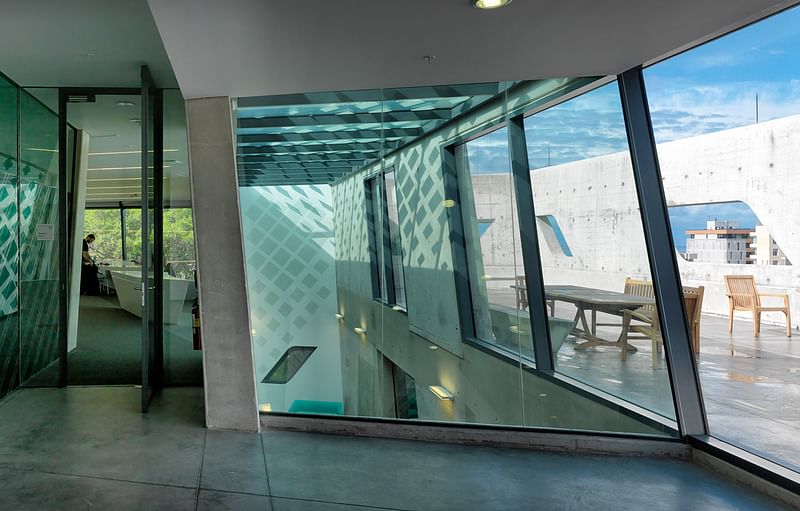
Project summary: “The American University of Beirut (AUB) held an invited competition for the design of a structure to accommodate a modern-day think tank on its lush middle campus, one that was in harmony with the rest of the university, especially mindful of the surrounding greenery, and to preserve, as far as possible, existing sightlines to the Mediterranean. The building had to fit into another stage in the implementation of a master plan for AUB, whose upper campus overlooks the water, and whose lower campus is located on the seafront. The architect responded to the project brief by producing a design that significantly reduces the building's footprint by "floating" a reading room, a workshop conference room and research spaces above the entrance courtyard in the form of a 21-metre-long cantilever in order to preserve the existing landscape. The 3,000 square metre building is defined by the routes and connections within the university; the building emerges from the geometries of intersecting routes as a series of interlocking platforms and spaces for research and discourse. The massing and volume distribution fits very well with the topography, and the nearby Ficus and Cyprus trees are perfectly integrated with the project. The building’s construction is a continuation of the 20th century Lebanese construction culture of working with fair-faced concrete.”
Check out videos of each project below.


Share
0 Comments
Comment as :